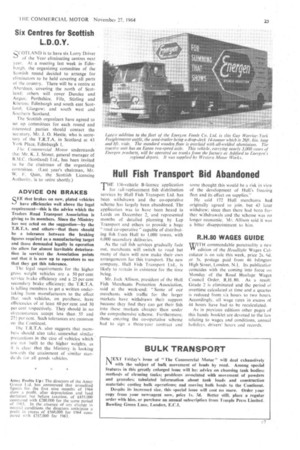ADVICE ON BRAKES QEE that brakes on new, plated vehicles
Page 27

If you've noticed an error in this article please click here to report it so we can fix it.
have efficiencies well above the legal requirement—this is the advice which the Traders Road Transport Association is giving to its members. Since the Ministry has not acted on the suggestion—by the T.R.T.A. and others—that there should he a tolerance between the braking figures required as a manufacturing target and those demanded legally in operation (to allow for almost inevitable deterioration in service) the Association points out that it is now up to operators to see that they get this tolerance.
The legal requirements for the higher gross weight vehicles are a 50 per cent service brake efficiency and a 25 per cent secondary brake efficiency; the T.R.T.A. is telling members to get a written undertaking from manufacturers to the effect that such vehicles, on purchase; have efficiencies of at least 60 per cent and 30 per cent respectively. They should in no circumstances accept less than 55 and 27 per cent. Such tolerances arc common on the Continent.
"I he T.R.T.A. also suggests that members should also take.sornewhat similar precautions in the case of vehicles which are not built to the higher weights, as it is clear that the Ministry is looking to arils the attainment of similar Standa:ds for all goods vehicles.
















































































































